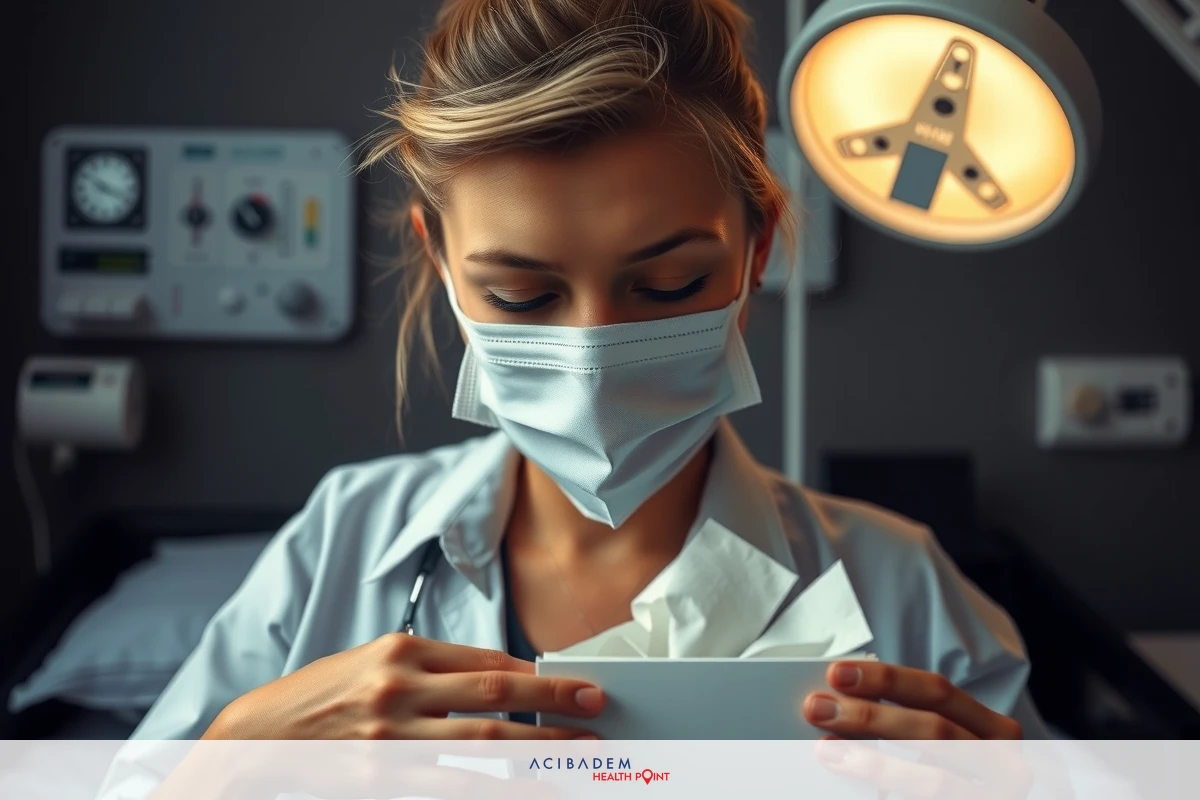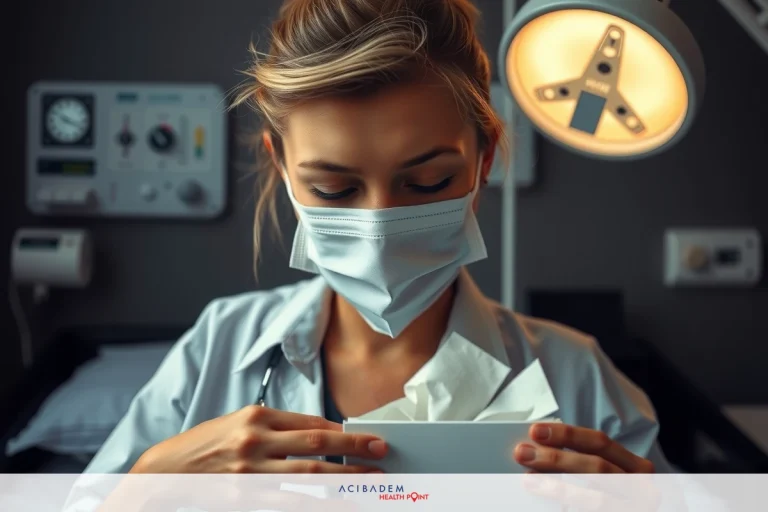Can Only Breathe Through One Nostril After Rhinoplasty
Can Only Breathe Through One Nostril After Rhinoplasty Experiencing difficulty breathing through one nostril following rhinoplasty surgery is not uncommon. The journey of recovery often presents such challenges, which may be due to factors like swelling or nasal congestion that temporarily affect airflow. This discomfort, albeit disconcerting, typically eases as healing progresses.
It’s crucial to remember that each individual’s post-operative experience can vary widely; some might face severe nasal obstruction while others notice only mild changes in their breathing pattern. A multitude of strategies exist for managing these symptoms and promoting a smoother recovery process. Should persistent issues arise, seeking medical advice promptly ensures timely intervention and prevents complications from escalating.
The potential causes of this issue aids patients in navigating their healing process with confidence. By gaining insight into what constitutes normal recovery versus when it might be necessary to consult a healthcare professional, patients can better manage expectations and contribute actively towards their own recuperative outcomes.
Can Only Breathe Through One Nostril After Rhinoplasty Causes of Nasal Obstruction
Nasal obstruction post-rhinoplasty is typically a transient experience influenced by several factors. Swelling, one of the most common causes, occurs as a natural response to surgical trauma. This swelling can narrow the nasal passages, leading to temporary breathing difficulty.
Can Only Breathe Through One Nostril After Rhinoplasty Another cause could be dried blood or mucus forming crusts inside the nostrils. These crusts block air passage and contribute towards perceived nasal obstruction following rhinoplasty surgery. It’s essential to note that these are part of the normal healing process and should not be forcibly removed, as it may lead to bleeding or injury.
While less frequent, certain complications associated with rhinoplasty might also result in nasal obstruction. For instance, an overly aggressive reduction of nasal structures during surgery may leave inadequate support for the nasal valve area – crucial for facilitating airflow – resulting in what is known as internal nasal valve collapse.
Post-operative care plays a significant role in managing these causes effectively and promoting recovery. Regular saline rinses help keep the nostrils clean and moistened while reducing crust formation and consequent blockage. Ensuring adequate hydration also aids in maintaining mucosal health within your nose during this period.
Despite all precautionary measures taken after rhinoplasty surgery, persistent difficulty breathing through one nostril warrants medical attention from your healthcare provider or surgeon promptly. They possess expertise necessary for discerning between typical post-operative symptoms versus signs indicative of potential complications requiring further intervention.
Tips for Managing Nasal Congestion
Nasal congestion can be a challenge during the recovery phase of rhinoplasty. In this context, it’s vital to arm yourself with tools and strategies that effectively manage these symptoms while fostering optimal healing conditions.
- Saline Rinses: Regular saline rinsing is an effective strategy for keeping nasal passages clean and moist, reducing crust formation—a common cause of postrhinoplasty nasal obstruction—and promoting comfort through enhanced airflow.
- Hydration: Keeping your body well-hydrated can help maintain mucosal health within the nose, which in

The image features a person wearing medical protective gear, including a face mask. They are situated in what appears to be a healthcare setting, possibly an examination or treatment room. turn aids in preventing crusting and enhancing natural self-cleaning mechanisms of your nostrils.
- Humidifiers: Using humidifiers at night or in dry environments increases ambient humidity levels, thereby helping to keep your nasal passages moist and relieving discomfort from dryness or stuffiness.
- Sleep Positioning: Sleep with your head elevated on multiple pillows during initial weeks post-surgery; this simple adjustment encourages reduced swelling—another frequent contributor towards temporary breathing difficulty after rhinoplasty.
- Avoidance of Nasal Irritants: Avoid exposure to irritants such as smoke or dust particles that could further exacerbate nasal congestion by causing irritation or allergic reactions.
- Use of Doctor-Prescribed Medications: Over-the-counter decongestant sprays should only be used if recommended by a healthcare professional since prolonged use may lead to rebound congestion—an increase in swelling once medication usage stops.
Remember: patience plays a central role throughout the journey towards recovery following rhinoplasty surgery—each individual’s path will differ based on their unique physical responses and healing processes! If you find unresolved issues persist despite implementing these tips, don’t hesitate to seek advice from medical professionals who possess necessary expertise for guiding you safely through these challenges onto full recuperation!
When to Seek Medical Advice
Recovering from rhinoplasty is a journey that presents a variety of experiences. While challenges such as nasal congestion or difficulty breathing through one nostril are not uncommon, it’s essential to understand when these symptoms cross the boundary from normal recovery into an area necessitating medical attention.
Experiencing mild discomfort, stuffiness, and changes in your breathing pattern during the initial weeks post-surgery can be attributed to natural healing processes your body undergoes. Swelling within the nasal passages, crust formation due to dried mucus or blood—these factors contribute towards temporary nasal obstruction but should gradually improve with time and appropriate post-operative care measures like saline rinses and maintaining hydration.
However, if you observe persistent difficulty breathing beyond this initial period despite implementing recommended management strategies—or find yourself facing increasingly severe symptoms—it might be indicative of potential complications requiring further intervention. Instances where your daily activities become hampered due to breathlessness or you experience marked asymmetry in air passage between both nostrils serve as red flags warranting consultation with healthcare professionals promptly.
In cases where an aggressive reduction has been made on nasal structures during surgery resulting in insufficient support for facilitating airflow (known as internal valve collapse), surgical revision may sometimes be necessary. In other instances, prolonged swelling could hint at underlying issues like infection requiring targeted treatment approaches under professional guidance.
Ultimately, seeking timely advice helps ensure minor challenges don’t escalate into severe complications while ensuring peace of mind throughout your recovery journey after rhinoplasty. With open communication channels maintained between patients and their surgeons—a symbiotic relationship indeed—the process becomes more manageable; armed with knowledge about what constitutes typical post-operative experiences versus signs that require immediate attention helps individuals navigate their recuperative trajectory efficiently!
Frequently Asked Questions
Is it normal to experience difficulty breathing through one nostril after rhinoplasty?
Yes, this experience is not uncommon following a rhinoplasty procedure. Factors such as swelling or crust formation within the nasal passages can temporarily affect airflow and lead to perceived nasal obstruction.
How long does it usually take for normal breathing patterns to resume post-rhinoplasty?
The timeline varies from person to person based on their unique healing processes. Generally, initial discomfort tends to gradually improve during the first few weeks post-surgery with appropriate care measures such as regular saline rinses and maintaining hydration.
What can I do at home to manage symptoms of nasal congestion during my recovery period?
Several strategies can aid in managing these symptoms—regular saline rinsing keeps your nostrils clean while reducing crust formation; ensuring adequate hydration aids mucosal health within your nose; using humidifiers in dry environments helps keep your nasal passages moist and comfortable; elevated head positioning while sleeping encourages reduced swelling.
When should I seek medical advice if experiencing persistent difficulty breathing through one nostril?
If you continue facing difficulties beyond the initial recovery period despite implementing recommended management strategies—or notice increasingly severe symptoms—it's crucial that you consult promptly with healthcare professionals. Persistent issues might indicate potential complications requiring further intervention.











